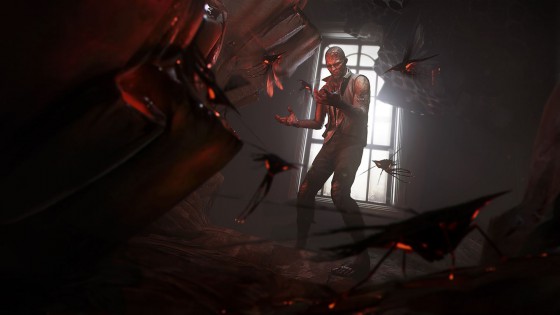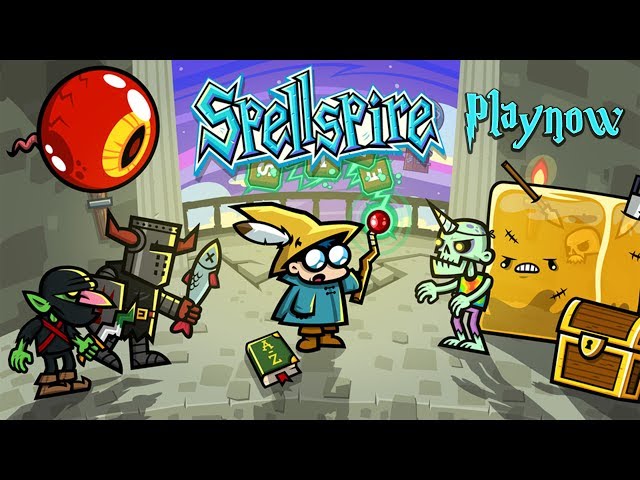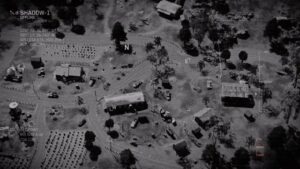In a genre saturated with nostalgia-fueled clones and bullet-hell extravaganzas, it takes a unique vision to make a classic top-down shoot ’em up stand out. Finnish developer 10tons Ltd, known for their prowess in the twin-stick shooter space with titles like Crimsonland and Tesla vs. Lovecraft, took on this challenge with Xenoraid. At first glance, it appears to be a familiar journey into the cosmos, pitting a lone starfighter against an overwhelming alien armada. However, beneath its polished, action-packed surface lies a surprisingly deep and strategic experience that rethinks fundamental shmup mechanics. Xenoraid isn’t just about twitch reflexes and memorizing patterns; it’s a game of resource management, tactical decision-making, and squadron command that breathes fresh life into a beloved formula.
The game eschews the traditional one-ship-one-life model for a dynamic four-fighter squadron system that you command in real-time. This, combined with mechanics like persistent ship damage, weapon overheating, and a meaningful upgrade path, transforms each mission from a simple arcade run into a calculated engagement. This review will delve deep into the mechanics that define Xenoraid, exploring its campaign structure, strategic depth, audiovisual presentation, and overall replay value to determine if it truly carves its own niche in the vast galaxy of space shooters.
A Strategic Overhaul of Classic Shmup Gameplay
The heart of Xenoraid lies in its clever deconstruction of core shoot ’em up conventions. Where most games in the genre prioritize relentless forward momentum and screen-clearing firepower, Xenoraid slows things down just enough to introduce a compelling layer of strategy. This is primarily achieved through its three standout mechanics: the ship-swapping system, persistent damage, and weapon management.
The Four-Fighter Squadron System
Instead of piloting a single, all-powerful ship, you are the commander of a four-ship squadron. With the press of a button, you can instantly swap between your chosen fighters, each with its own unique primary weapon, secondary special ability, and handling characteristics. This is not merely a cosmetic choice or an extra life system; it’s the central pillar of the game’s strategy. The four ship classes are:
- Assault Fighter: The balanced workhorse. Equipped with a versatile vulcan cannon, it’s effective against smaller, agile enemy craft but can struggle against heavily armored targets.
- Heavy Fighter: The slow but powerful tank. Its primary weapon shreds armor and deals massive damage, making it ideal for taking on larger cruisers and bosses. Its special ability is often a powerful area-of-effect weapon.
- Interceptor: The nimble scout. Fast and agile, it excels at dodging projectiles and chasing down quick-moving enemies. Its weapons are typically weaker but fire rapidly.
- Support Fighter: A utility-focused ship. While its offensive capabilities are limited, its special abilities are game-changing, ranging from repairing other ships in the squadron to deploying defensive shields or powerful bombs.
Success in Xenoraid depends on your ability to use the right tool for the right job. Are you facing a swarm of small, fast-moving aliens? Swap to the Interceptor to pick them off. Is a giant, shielded battlecruiser filling the screen? Bring in the Heavy Fighter to crack its hull. This constant tactical switching keeps the gameplay engaging and prevents it from devolving into simply holding down the fire button.
Persistent Damage and Resource Management
Adding another significant strategic layer is the concept of persistent damage. Any damage your ships take during a mission isn’t magically repaired when the level ends. Instead, that damage carries over to the next engagement. Between missions, you return to your starbase, where you must use the credits earned from combat to repair your squadron. This creates a fascinating risk-reward dynamic. Do you push a damaged ship to its limits to finish a wave, risking its destruction, or do you swap it out to preserve its health and save on repair costs? Losing a ship mid-mission means it’s unavailable until the mission is over, and you’ll face a hefty replacement fee. This system forces you to play defensively and thoughtfully, valuing survival as much as destruction. It connects each mission to the next, making the campaign feel like a cohesive war effort rather than a series of disconnected levels.
Weapon Overheating and Firing Discipline
Finally, Xenoraid actively discourages mindless shooting with a weapon overheat mechanic. Firing your primary weapon continuously will cause it to overheat, rendering it useless for a few crucial seconds while it cools down. This simple system forces players to use controlled bursts and aim their shots carefully. It also subtly encourages ship-swapping; if one fighter’s weapon overheats in a critical moment, you can immediately switch to another fully-armed ship to continue the fight. This mechanic, combined with the limited-use special weapons, ensures that every button press feels deliberate and impactful.
Campaign, Progression, and Cosmic Conflict
Xenoraid wraps its innovative gameplay mechanics in a well-structured campaign that chronicles Earth’s desperate defense against a surprise alien invasion. While the story is straightforward and serves mostly as a backdrop for the action, it’s presented effectively through pre-mission briefings and character dialogue that gives context to your struggle.
Mission Structure and Variety
The campaign is divided into several acts, each taking place in a different sector of the solar system. The mission structure is varied enough to maintain interest throughout its 50+ levels. You’ll engage in standard “destroy all hostiles” missions, defend lumbering civilian transports, dismantle giant asteroid-mining operations, and, of course, face off against massive, screen-filling bosses. The difficulty curve is expertly managed, gradually introducing new enemy types and more complex challenges that force you to adapt your strategies and invest wisely in your squadron.
The Tech Tree: Upgrading Your Arsenal
Between missions, the starbase serves as your hub for progression. Here, you can spend your hard-earned credits on a wide array of upgrades for your squadron. The tech tree is extensive, allowing you to enhance every aspect of your fleet. You can improve a ship’s base stats like armor and maneuverability, boost the power and reduce the heat generation of primary weapons, or unlock entirely new and more powerful secondary weapons.
This progression system is deeply satisfying. Investing in a new plasma cannon for your Heavy Fighter and then witnessing its devastating effect in the next mission provides a tangible sense of growth and power. The choices you make in the tech tree have a direct impact on your combat effectiveness, encouraging you to experiment with different squadron loadouts and upgrade paths.
This element of software debugging your own strategy is key; if a particular build isn’t working, you must analyze your approach and re-spec your resources, much like a developer performing code debugging to fix an issue. The process of refining your squadron feels akin to mastering complex debugging techniques to achieve optimal performance.
Enemy Design and Epic Boss Battles
The alien armada you face is diverse and well-designed. You’ll encounter everything from small, zippy fighters and kamikaze drones to heavily armored cruisers protected by energy shields and missile-launching frigates. Each enemy type requires a different tactical approach, reinforcing the need for a balanced squadron. The boss battles are a true highlight. These multi-stage encounters are a test of endurance, pattern recognition, and strategic ship-swapping. Defeating a colossal alien warship by systematically dismantling its weapon turrets with your Heavy Fighter while dodging missile swarms with your Interceptor is an exhilarating and rewarding experience.
Audiovisual Polish and Performance
For a game in the shmup genre, a smooth and readable visual presentation is paramount, and Xenoraid delivers. The visuals are clean, crisp, and vibrant, with detailed ship models and spectacular explosion effects. The backdrops, from dense asteroid fields to swirling nebulae and the cold vacuum of deep space, are beautifully rendered and provide a great sense of atmosphere without cluttering the screen. Enemy projectiles are brightly colored and clearly telegraphed, which is essential for navigating the more chaotic battles.
The sound design is equally impressive. Weapons have a satisfying punch, explosions are bassy and impactful, and the electronic-orchestral soundtrack strikes the perfect balance between epic space opera and high-energy action music. It effectively complements the on-screen chaos without becoming distracting. On the performance front, Xenoraid is rock-solid. The game maintains a fluid frame rate even when the screen is filled with enemies and particle effects, ensuring the responsive controls needed for a demanding shooter are never compromised. This technical stability is crucial and speaks to a well-optimized engine, free of the kinds of issues that would require extensive production debugging.
Modes, Replayability, and Final Verdict
Beyond the substantial single-player campaign, Xenoraid offers a couple of other modes to extend its longevity. The main attraction is the Survival mode, which pits you against endless, increasingly difficult waves of enemies. This mode is a pure test of skill and endurance, complete with online leaderboards that add a strong competitive incentive for score-chasers. The game also features drop-in, drop-out local co-op for up to four players, allowing friends to take control of the different ships in the squadron. This adds a fun, chaotic dimension to the gameplay, transforming the strategic single-player experience into a cooperative ballet of destruction.
The combination of a lengthy campaign, a compelling upgrade system that encourages experimentation, and a highly replayable Survival mode gives Xenoraid excellent value. It’s a game that respects the foundations of its genre while bravely innovating with new ideas.
In conclusion, Xenoraid is a stellar example of how to modernize a classic genre without losing its soul. By focusing on strategic depth through its unique squadron mechanics, 10tons has created a shooter that is both accessible to newcomers and deeply rewarding for veterans. It challenges your brain as much as your reflexes, making every victory feel earned. If you’re looking for a top-down shooter that offers more than just a bullet-filled screen, Xenoraid is an easy and enthusiastic recommendation.













